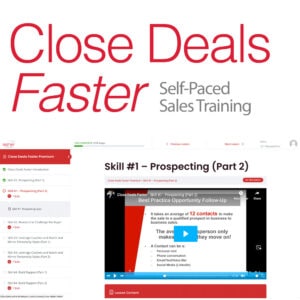How ready is your company for social selling?

One of the hottest topics in advanced sales training is social selling. Despite some of the flak social media has received in the news lately, B2B salespeople seeking an edge are increasingly using it to source business.
As we approach the end of the year, it’s a good idea to refresh our marketing plans in preparation for a solid 2020. Whether you already use social media to sell or are just getting your feet wet, the following will cover some best practices to increase your effectiveness.
Keep your eyes on the right prize (hint: it’s not likes)
As in any promotional activity, it pays to tie results back to meaningful business outcomes and metrics. For most of us, that means revenue, brand growth, favorable PR, ROI, leads, conversions, etc.
However, most social media platforms visibly emphasize likes and followers. This has led many users to artificially inflate these vanity metrics. The temptation to buy followers, likes and comments to look popular is not limited to beauty influencers or actors. Many brands do it as well. Even Mitt Romney was caught buying over 100,000 fake followers during his bid for the presidency.
Here’s why fake followers are a bad idea:
- Real insights come from analytics built on real data. Filling your accounts with fake followers or likes prevents you from discovering what actually works to build a genuine audience. Advanced sales training and marketing training will give you plenty of techniques to do so.
- Facebook seems to decrease organic reach as your follower count grows, meaning smaller accounts achieve greater coverage.
- If you run ad campaigns on your social accounts, you will increase your spend on people who will not be reading your content nor buying any services.
- You risk ruining your reputation, as it is easy to discern who is buying fake followers, likes, and comments. There are websites that reveal if an account is likely to be full of fakes.
The moral of the story is: cheating on social media is not a good look and turns buyers away. Instead, determine the KPIs which make the most sense for your business and emphasize those over mere likes and follower counts.
Invest in great content
Despite the tsunami of content flooding the web already, the demand for content is not abating. And audiences are expecting better quality content from brands, as well as a greater variety of this topic.
If you are currently blogging, great. Add video, infographics, podcasts, and even books to the mix. Bring in subject matter experts to contribute guest posts or appear on your web show. Create a mix of informal social media posts, such as “a quick tour of the office,” with professional-grade video productions that you can share across all of your outlets.
Content is still king, and this is reflected in many advanced sales training curricula which stress the need for individual salespeople to share/publish in order to build their own brands and attract leads.
Connect the dots
One challenge with social media selling is getting the big picture from disparate data sources, which can be onerous if done manually. To solve this, many enterprise-level sales and marketing teams employ data management platforms (DMPs) in their day to day work, such as Salesforce’s AI-powered Audience Studio. These provide a unified view of customer and audience activity from different platforms.
For small and middle-market companies, high-end DMPs do not have much penetration due to costs. Fortunately, other solutions exist which can do many of the same functions, such as Google Data Studio, Dashthis, Sprout Social, Brand24, Mentionlytics, Improvado, and dozens more. While you might have to combine one or more platforms to get exactly the data you need, it is still far easier than manual collection.
It’s a rapidly evolving space, but some of the capabilities to look for include:
- High-level overview of all social activity and your KPIs
- See the exact clicks that make up each buyer’s journey
- Use lookalike targeting to discover new audiences based on your best current customers, and push your content to them
- Avoid sending ads to existing customers (reduce costs)
- Monitor your keywords, including industry topics and competitor names, to stay abreast of opportunities in the market (social listening)
- Detect sentiment, including negative sentiment about your brand
Advanced sales training has traditionally taught the use of CRM software, but social platform management is just as important for social sellers. And speaking of CRM.
Capture leads in your CRM
Now that you are publishing content and having conversations across your social channels, it’s important to capture contact information from potential buyers into your CRM for off-social marketing, i.e. email campaigns, sales calls, etc.
This can be as simple as shooting a direct message asking for an email, setting up gated content to capture the data, or installing a chatbot on your landing page which asks visitors for their contact information in order to answer any questions.
In conclusion, social selling requires the proper software tools, clear goals, and smart metrics. When married with advanced sales training to properly identify and handle leads, it can provide a significant stream of revenue.



